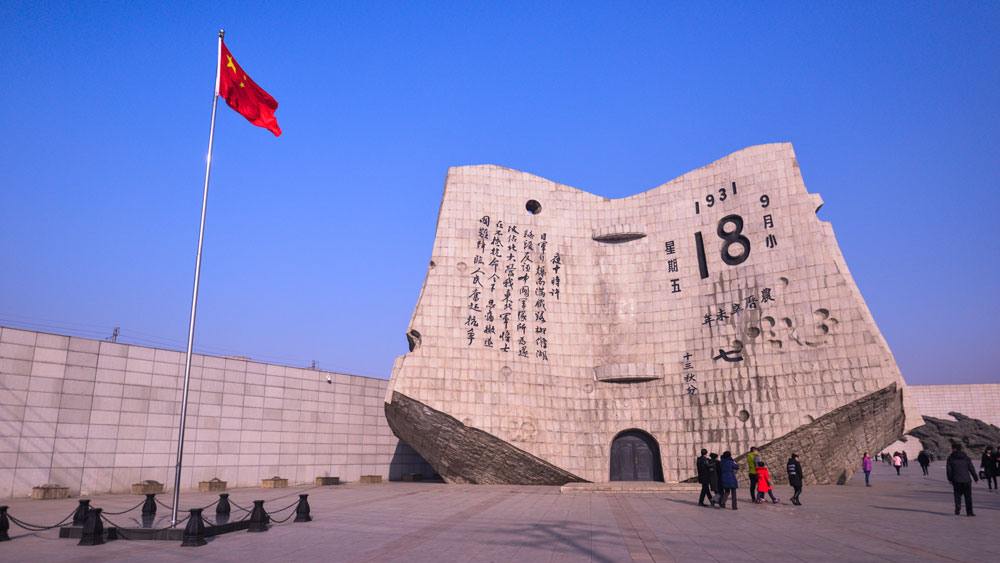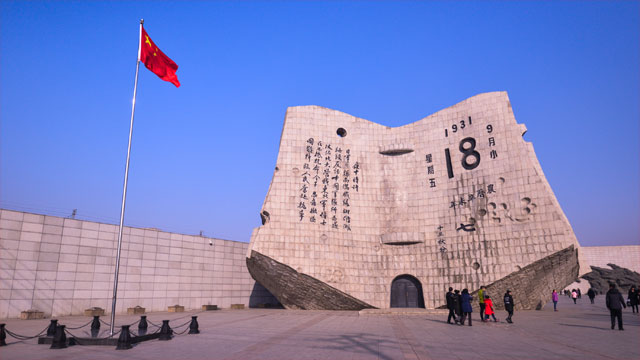Liaoning

Liaoning Province, formerly known as Fengtian province and Shengjing, is located in Northeast China, or Liaoning Province, Shenyang, the capital of Liaoning Province. Liaoning is bounded between 38 ° 43'to 43 ° 26' north latitude, 118 ° 53'to 125 ° 46' e, Yellow Sea and Bohai Sea in the south, Hebei in the southwest, Inner Mongolia in the northwest, Jilin in the northeast, Yalu River in the southeast and North Korea, with a total area of 146600 square kilometers.
Liaoning Province is generally from north to south, from east to west to the middle. The hills and hills are divided into two parts, falling to the central plain, inclining to Bohai Sea in horseshoe shape, and composed of mountains, hills and plains. It crosses six water systems of Liaohe, Hunhe, daling, Taizi, Huanyang and Yalu River, which is temperate monsoon climate.
As of 2019, Liaoning Province has 14 prefecture level cities, 59 municipal districts, 16 county-level cities, 17 counties and 8 autonomous counties, totaling 100 County divisions. 690 streets, 640 towns, 147 townships and 54 ethnic townships, totaling 1531 township level divisions.
By the end of 2018, the total regional GDP of the whole year was 253.54 billion yuan, an increase of 5.7% over the previous year. Among them, the added value of the first industry is RMB 2033.33 billion, an increase of 3.1%; the added value of the secondary industry is 100.25 billion yuan, an increase of 7.4%; the added value of the tertiary industry is 1325.7 billion yuan, an increase of 4.8%. The annual GDP per capita was 58008 yuan, an increase of 5.9 per cent over the previous year.
Historical evolution
The Stone Age civilization in Liaoning Province includes Xinle culture from 7300 to 6800, Hongshan Culture from 6000 to 5000 years ago, and Xia Jiadian lower culture from 4300 BC to 2500 BC.
In summer, when Yu divided Jiuzhou, Liaoning belonged to Youzhou.
In the Shang Dynasty, it belonged to the northern country, Guzhu.
After the death of Shang Dynasty, Jizi moved to the East and established the North Korea.
In 1046 BC, King Wu of Zhou destroyed Zhou, and the king of Wu of Zhou Dynasty appointed Zhao Gong to Yan, and ruled Guzhu, North Korea, Donghu and Shanrong.
In the spring and Autumn period and Warring States period, Yan state became one of the seven male; Liaoning was a group of Liaodong and Liaoxi county.
Qin Dynasty is divided into 36 counties, among which Liaodong county and Liaoxi county are set in Liaoning Province.
In the late Qin and early Han Dynasty, Xiangyu divided the generals as king, Liaoning Province was the king of Liaodong and the minor was king Yan.
The five years of Emperor Wu's reign in Han Dynasty (106 years) were divided into 13 states, of which Liaoning was Youzhou.
In the Eastern Han Dynasty, xuantu county and Liaodong were added, and 24 counties were set up in the prefecture.
Wei Jin, the northern and Southern Dynasties, for the state county era. Liaoning is equipped with Pingzhou, Liaodong County, Changli County, xuandod County, Liaoxi county and other counties under the prefecture. In the northern and Southern Dynasties, the local power changed frequently, and the administrative construction and construction of Liaoning Province was very complicated, but it was still the three-level system of prefecture and county, with more and more counties and smaller divisions. In the period of Northern Qi Dynasty, except for 30 cities set up by Gaogouli, there were 1 Prefecture, 2 county and 7 counties in Northern Qi.
Sui, Tang, Liao and Jin Dynasties were the times of Tao and road. In this period, the first level institutions of administrative construction in Liaoning Province were basically roads and roads.
In the Sui Dynasty, the first stage was the second level system of state and county, and the second system was county and county in the later period of Sui Dynasty; Liucheng County, Liaoxi county and Liaodong county were set up in Liaoning Province, and counties were set up in the county.
In Tang Dynasty, the three-level system of shixingdao, Zhou and county was under the jurisdiction of the North Road of the river in Liaoning Province. Under the road, there are the governor's office on the battalion state and Anton capital, and the prefecture and county are under the government. From the three years of the Yuan Xing Dynasty to the third year of the Tang Dynasty and the Qianfeng (404-668), the east of Liaohe River was occupied by Gaogouli, the northern national power, and its administrative structure was the city construction institution.
In Liaoning, there were Shangjing Road, Zhongjing Road and Tokyo road in Liaoning Province, and prefecture county was set under the road. In Liaoning, Jindai has Shangjing Road, Xianping Road, Tokyo Road, Beijing Road, etc., and prefecture and county are set under the road. The number of grass-roots construction institutions in Liaojin period is large, and the subordinate relationship is complex, which is the period of general setting up and extensive development in Liaoning. In Jin Dynasty, there were 4 roads involved in Liaoning area, 22 roads belonged to roads, states and governments, and they were under the jurisdiction of 35 counties and 8 counties.
In Yuan Dynasty, Liaoning Province was set up in Liaoning Province, and there were roads, states and county organizations.
In Ming Dynasty, Liaodong capital division was set up in Liaoning Province, and 25 Wei and 2 states were set up under the capital division. Although the system of the Department of capital and health is a military institution, it is also responsible for civil affairs. Its functions are similar to provincial operation, and it is the continuation of the yuan agency provincial system.
In the Qing Dynasty, the system of flag and people division was implemented in Liaoning Province, and the flag people were governed by Shengjing (Fengtian general) system, and the people were managed by Fuzhou county. Shengjing (Fengtian) general area is one of the general districts of Qing Dynasty, such as Heilongjiang general, Jilin general, uliyasutai general and Ili General of Qing Dynasty. In the late Qing Dynasty, Fengtian province was changed, and the provincial government had roads and counties.
After the Sino Japanese War, on April 17, 1895, Guangxu 21, the Qing government and the Japanese Meiji government signed the Treaty of Maguan, ceding Liaodong Peninsula to Japan. Six days later, Russia, Germany and France, in their own interests, forced Japan to return Liaodong to China on the pretext of providing "friendly advice".
In 1896, Russia made great contributions to the Liao Dynasty by forcing Japan to sign the Sino Russian secret treaty with the Qing government. In the 24th year of Guangxu (1898), Russia rented two ports of Lushun and Dalian.
In 1904, Japan reorganized its flag and attacked Russian navy in Lushun, which caused Japanese Russian war.
In the thirty third year of Guangxu (1907), the Qing government changed the military government system in Northeast China into provincial system, and abolished general Shengjing and established Fengtian province, which is referred to as "Feng".
In the 18th year of the Republic of China (1929), the Kuomintang government of Nanjing changed Beijing to Beiping and Fengtian province to Liaoning Province. In this case, Fengtian city was Shenyang City, and "Liaoning" became the special name of this province. The province has 3 cities, 59 counties and 6 flags. In addition, there were four counties with hot river channels and Lushun city of Guandong hall in Liaoning Province at that time. During the period of the Northeast occupied, the pseudo Manchuria had Fengtian province, Jinzhou Province, Anton province and Rehe Province in Liaoning Province, and the province had cities and counties under its jurisdiction.

Liaoning
-
1.SiChuan
Sichuan, or Sichuan for short, is one of China's 23 provinces, the capital of Chengdu. It is located in the interior of Southwest China, between 26 ° 03 ′ - 34 ° 19 ′, 97 ° 21 ′ - 108 ° 12 ′ e, Chongq
Time 2019-12-14 -
2.Jilin
Jilin Province, for short. Luck "Yes. The People's Republic of China Provincial Administrative Region, provincial capital Changchun 。 Located in China Northeast Central region, with Liaoning , In
Time 2019-12-16 -
3.Heilongjiang
Heilongjiang Province, referred to as "black", the provincial capital Harbin It is the most northernmost and most Eastern provincial administrative area in China, with a total area of 473 th
Time 2019-12-16 -
4.Jiangsu Province
Jiangsu, referred to as "Su", is the provincial administrative region of the people's Republic of China. Nanjing, the capital of the province, is located in the eastern coastal area of the m
Time 2019-12-16 -
5.Jiangxi
Jiangxi Province, abbreviated to Jiangxi, is one of the 23 provinces in China and the capital of Nanchang. Jiangxi is located in the southeast of China, on the South Bank of the middle and lower reach
Time 2019-12-16 -
6.Fujian
Fujian Province, referred to as "Fujian", is the provincial administrative region of the people's Republic of China. Fuzhou, the capital of Fujian Province, is located in the southeast coast
Time 2019-12-16 -
7.Hunan
Hunan Province, referred to as Hunan, is one of the 23 provinces in China, the capital of Changsha. It is bounded between 24 ° 38 ′ - 30 ° 08 ′ n, 108 ° 47 ′ - 114 ° 15 ′ e, Jiangxi in the East
Time 2019-12-16 -
8.GuangXi
Guangxi Zhuang Autonomous Region, referred to as "Gui", is a provincial administrative region of the people's Republic of China, located in South China. Guangxi borders between 20 ° 54 ′ - 2
Time 2019-12-16 -
9.Hainan
Hainan Province, one of China's 23 provinces, is located in the southernmost part of China, referred to as Qiong, the capital of Haikou. Hainan Province is China's special economic zone and pilot free
Time 2019-12-16 -
10.Tibet
Tibet, or "Tibet" for short. Lhasa, the capital of Tibet Autonomous Region, is located in the southwest border of the people's Republic of China. It is one of the five ethnic autonomous regi
Time 2019-12-16 -
11.Xinjiang
Xinjiang Uygur Autonomous Region, referred to as "new", has its capital, Urumqi, located in Northwest China. It is one of China's five ethnic minority autonomous regions. With an area of 1664900 square kilometers, it is the largest provincial ad
Time 2019-12-16 -
12.Taiwan
Taiwan, or Taiwan for short, is the provincial administrative region of the people's Republic of China, the capital of Taipei. It is located in the southeast sea area of the mainland of China, facing
Time 2019-12-17